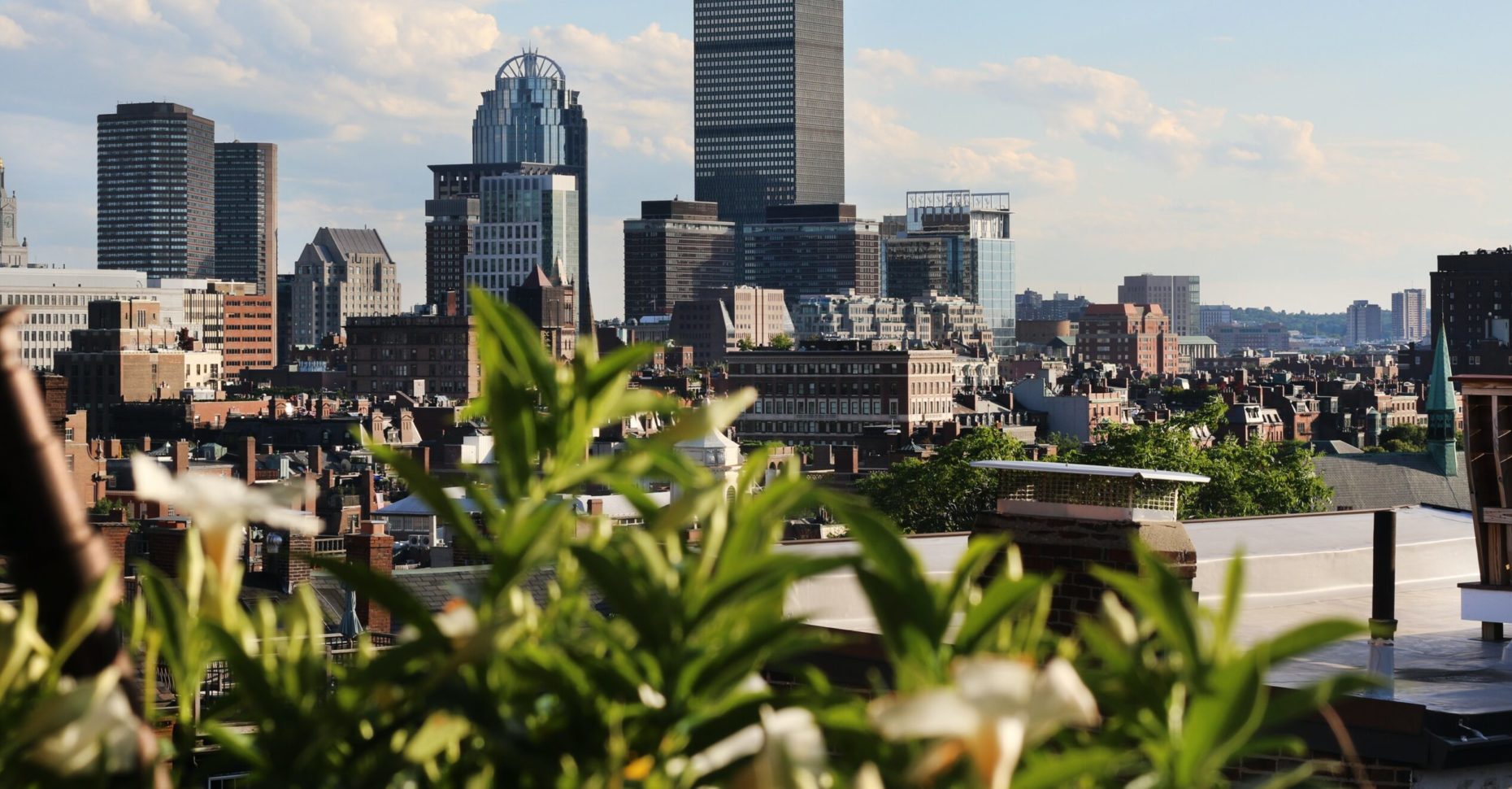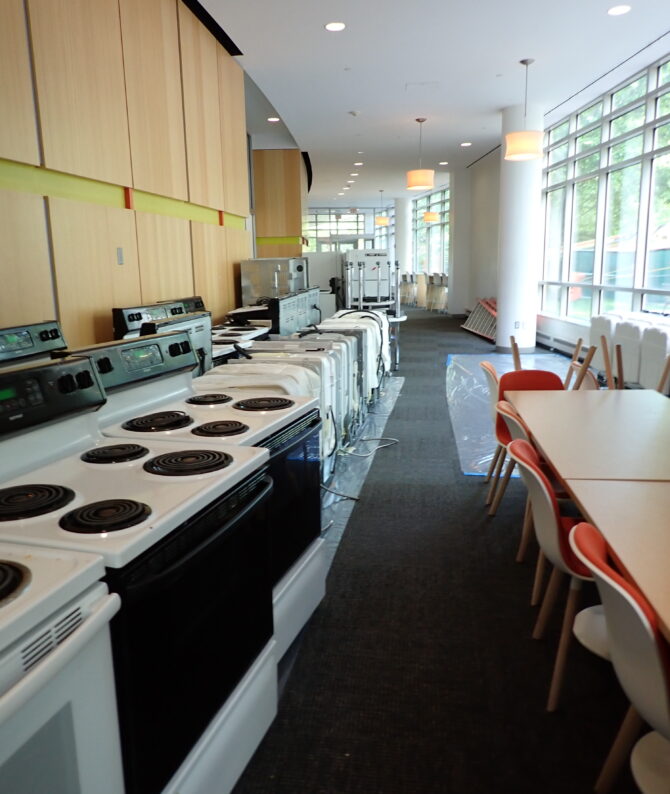Heat Island Effect

The urban and built up environments absorb and trap heat more readily than rural or forested areas. This is known as the heat island effect, and can raise local temperatures contributing to hotter days, reduced nighttime cooling, and higher air-pollution levels. Northeastern’s Boston campus has taken actions to mitigate the heat island effect by adding trees, natural landscapes, and reflective white roofs. These actions work to reduce the amount of sunlight heat absorbed on our campus location from buildings, walkways and hardscapes.
40% |
of buildings on the Boston campus have white reflective roofs which help keep buildings cool, reduces air pollution, and greenhouse gas emissions. |
The concept of cool roofs uses one of the oldest known facts on color physiology and heat energy. Dark colors absorb more light from the environment creating heat energy and white reflects light wavelengths reflecting heat energy as well. Installing white reflective roofs reduces energy by decreasing the use of air conditioner needs, reduces local air temperatures effecting heat buildup in cities, and reduces greenhouse gas emissions that contribute to the effects of global warming. Over the years Northeastern has converted 40% of the buildings on the Boston Campus to white reflective roofs.
16% |
of the Boston campus is covered by landscaping to help keep the campus cooler on those hot summer days. |
Urban heat island effect occurs because the dense nonporous dark surfaces, such as roads and building materials used in cities, absorb heat during the day and release it at night. One of the simplest solutions to reducing the urban heat island effect is to provide more shade and evapotranspiration. According to the EPA, trees and vegetation can lower surface temperatures by 20–45°F. Northeastern understands the many benefits of plants, including city noise reduction, higher air quality, and improved mental health. The Boston Campus is a Level II accredited Arboretum with 1,471 trees, 5,404 shrubs, and 141 woody plants.
| Click Here to learn more about the Northeastern Arboretum |



